Minds On
Wind turbines
Explore the following video of a wind turbine located in Toronto, Ontario.
What do you think it is used for?
How do you think it works?
Record your ideas digitally, orally, or on paper.
Action
What does a wind turbine do?
Air does a lot of work!
Most animals, including humans, breathe air to stay alive.
But did you know? Air that moves can be used to create electricity!
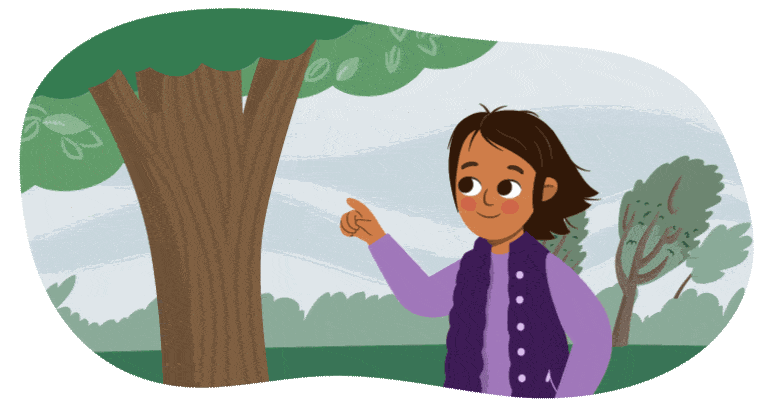
For example, wind turbines use the power of the wind and turn it into electricity.
Let’s explore how they work!
How does a wind turbine work?
A wind turbine is an example of a simple machine called a wheel and axle.
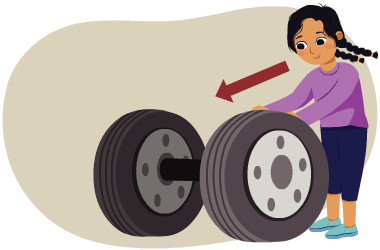
The wind blows on the blades (instead of wheels), which turns the axle.
Press ‘Simple Machine’ to explore the definition of simple machines.
A simple machine is an object that makes work easier. There are six basic types of simple machines: lever, inclined plane, wedge, pulley, wheel and axle, and screw.
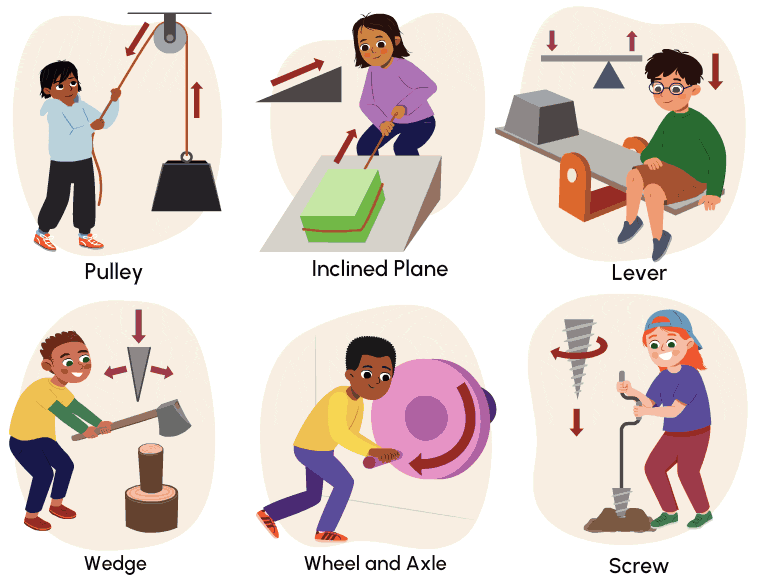 Description
Description
Learners demonstrating the six simply machines. Pulley: a leaner lifts a weight on a rope with the help of a wheel attached to the ceiling. Inclined plane: A learner pulls a weight with a rope up a flat, rising surface. Lever: a learner sits on a seesaw to lift a weight at the opposite end. Wedge: a learner splits a wood log with the wedge of an axe. Wheel and axle: a leaner rotates a wheel on a wall with a handle. Screw: a leaner drills into the ground by turning a large screw downward.
Let’s explore the parts of a wind turbine!
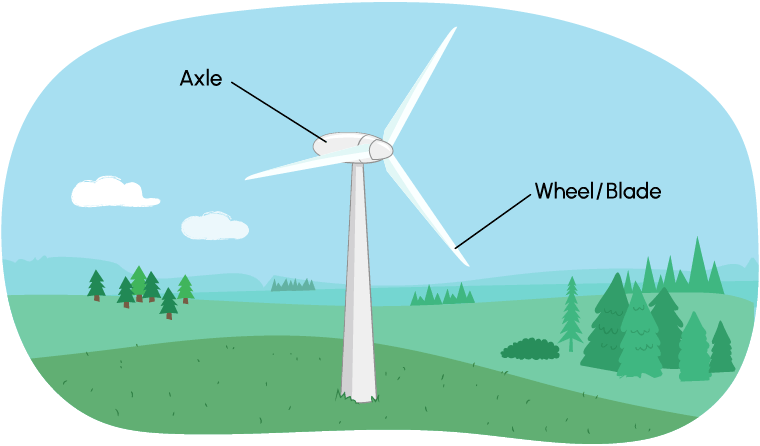
Ontario connection
This learning activity highlights people, places, or innovations that relate directly to the province of Ontario. Enjoy the exploration!

Wind power plays an important part in the way we power our world.
This is because wind power is environmentally friendly and does not pollute the air like many power plants do.
Let’s explore the following example of a wind farm located in Henvey Inlet First Nation, in Ontario. Wind farms are places where many large wind turbines have been grouped together. These wind turbines work together to power buildings and communities.
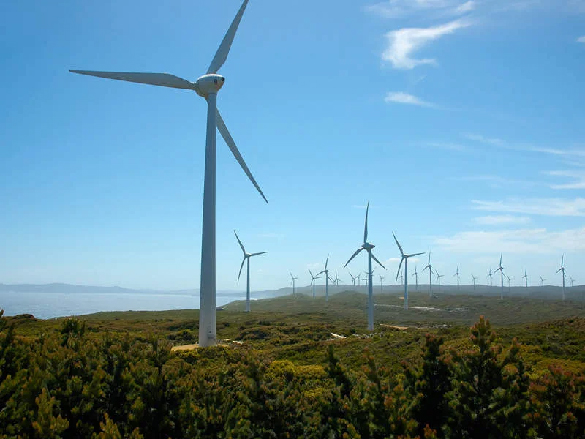
Henvey Inlet Wind Energy Centre
Features of a wind turbine
A wind turbine has different parts including the blades, the hub (the part where the blades are connected), the generator, and the tower.

A wind turbine with the hub, the blade, the generator and the tower labelled. The hub is the part that holds the blades on to the wind turbine. The blades are the moving pieces that catch the wind and turn. The generator is a part that moves and changes wind energy into electricity. The tower is the part that the wind turbine stands on.
When designing wind turbines, engineers consider different things including:
- the height of the tower
- the shape and number of blades

The steps to design a wind turbine
Task: Design a wind turbine
A wind farm in Ontario has asked you to design a wind turbine that uses wind energy to do work.
It needs to:
- have a tower
- have 3 to 4 blades
- turn using wind
Let’s explore the steps to design a wind turbine for the wind farm. Now that you have a task, let’s explore the rest of the steps!

Brainstorming is when you think about ideas like how to solve a problem.
Your next step is to brainstorm possible ideas for the blades and tower of your wind turbine.
What materials could you use?
Possible materials
Plan your design

When you plan something, you think about the steps you have to follow and the materials you will need.
Use pictures and words to describe your plan.
Consider the following questions. Be sure to explain your thinking for each question.
- What shape will your blades be?
- How tall will your tower be?
- What materials will you use for the blades?
- What materials will you use for the tower?
Record your ideas using a method of your choice or in the Plan Your Design document.

|
Plan Your Design |
|
|
Blades |
Use pictures or words to list the materials you’ll use. |
|
Tower |
Use pictures or words to list the materials you’ll use. |
|
Use pictures and words to describe your wind turbine design. If possible, label the important parts. |
|
Press the ‘Activity’ button to access Plan Your Design.
Pause and Reflect
Pause and reflect
As you have designed your wind turbine, you have completed the first steps of how to create a wind turbine.
- You have asked questions about how to design the blades and the tower of a wind turbine.
- You have brainstormed ideas.
- You have planned your wind turbine design.
Now that you have designed your wind turbine, what would be your next steps?
Complete the following activity to explore the next steps in making a wind turbine design!
Consolidation
Putting it all together
Examine the following model of a wind turbine.
Use what you have learned about wind turbines and how they are made to respond to the following questions.
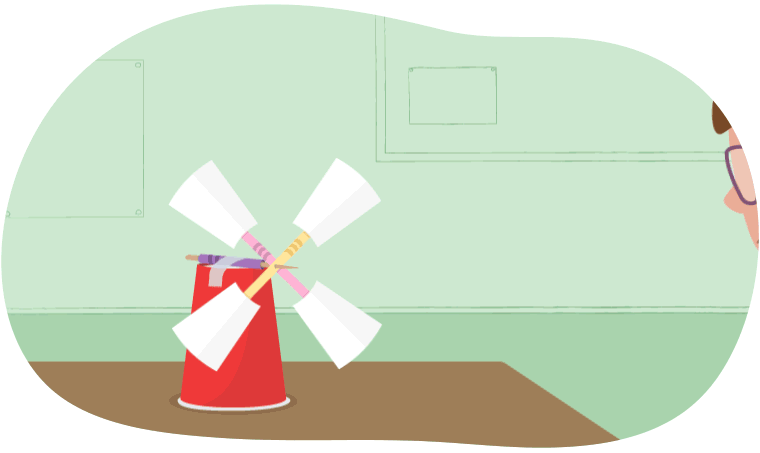
Respond to the following questions.
- Why do you think the blades are curved?
- Why is the tower wider at the bottom?
- What happens when the wind stops?
- Are there any changes you would make to this design? Why?
Record your responses digitally, orally, or on paper.
Reflection
How do you feel about what you have learned in this activity? Which of the next four sentences best matches how you are feeling about your learning? Press the button that is beside this sentence.
I feel…
Now, record your ideas about your feelings using a voice recorder, speech-to-text, or writing tool.